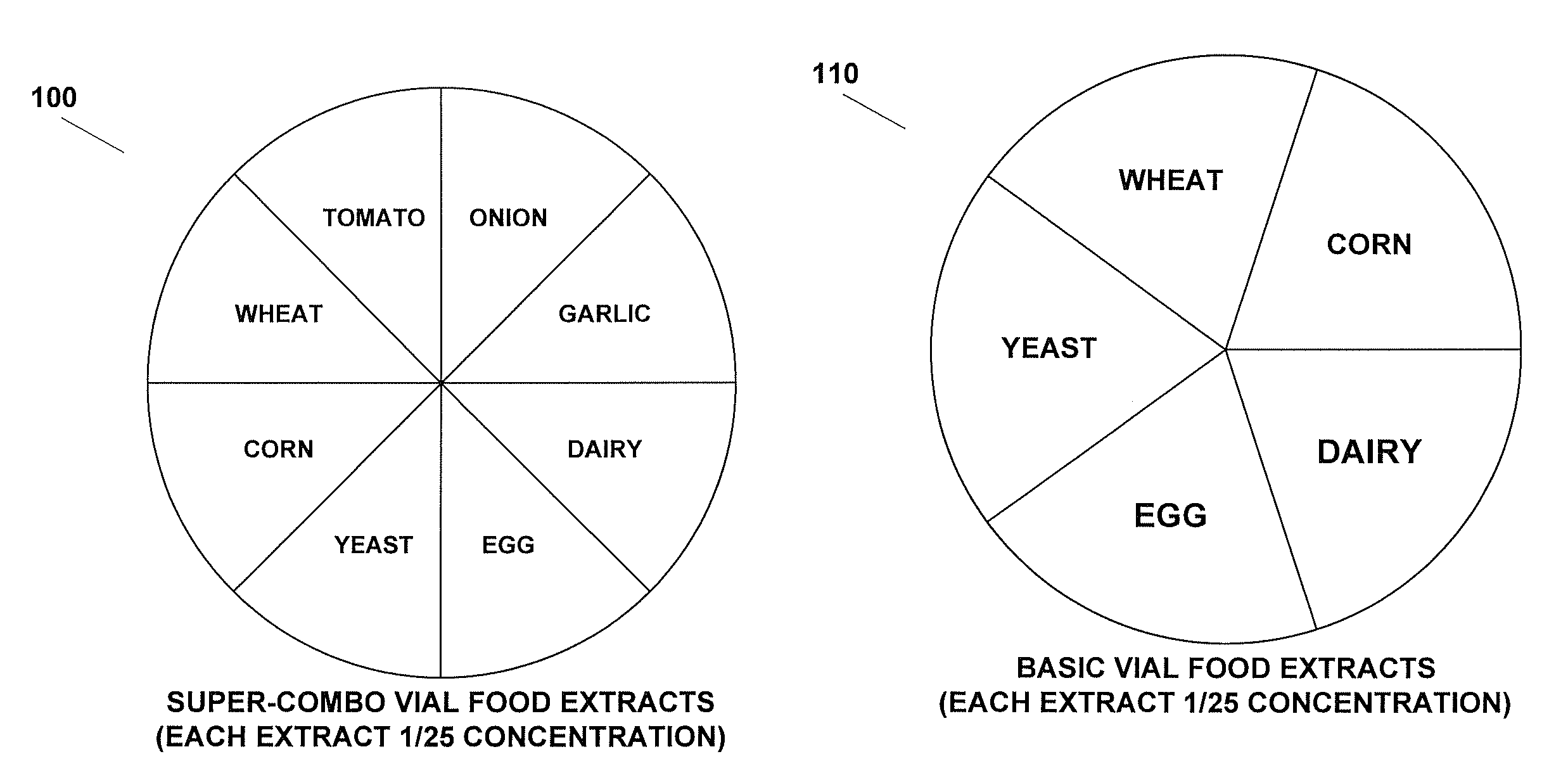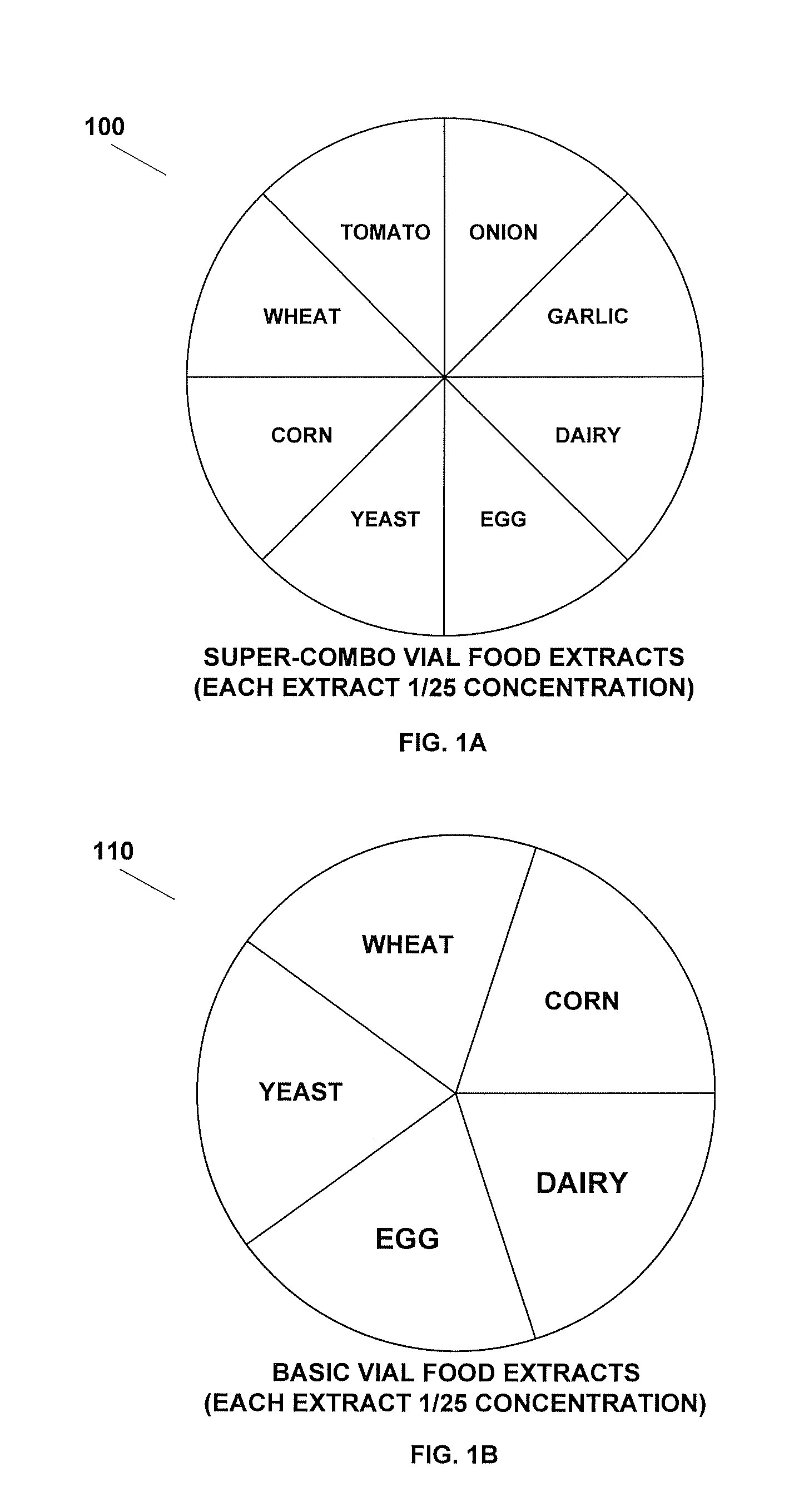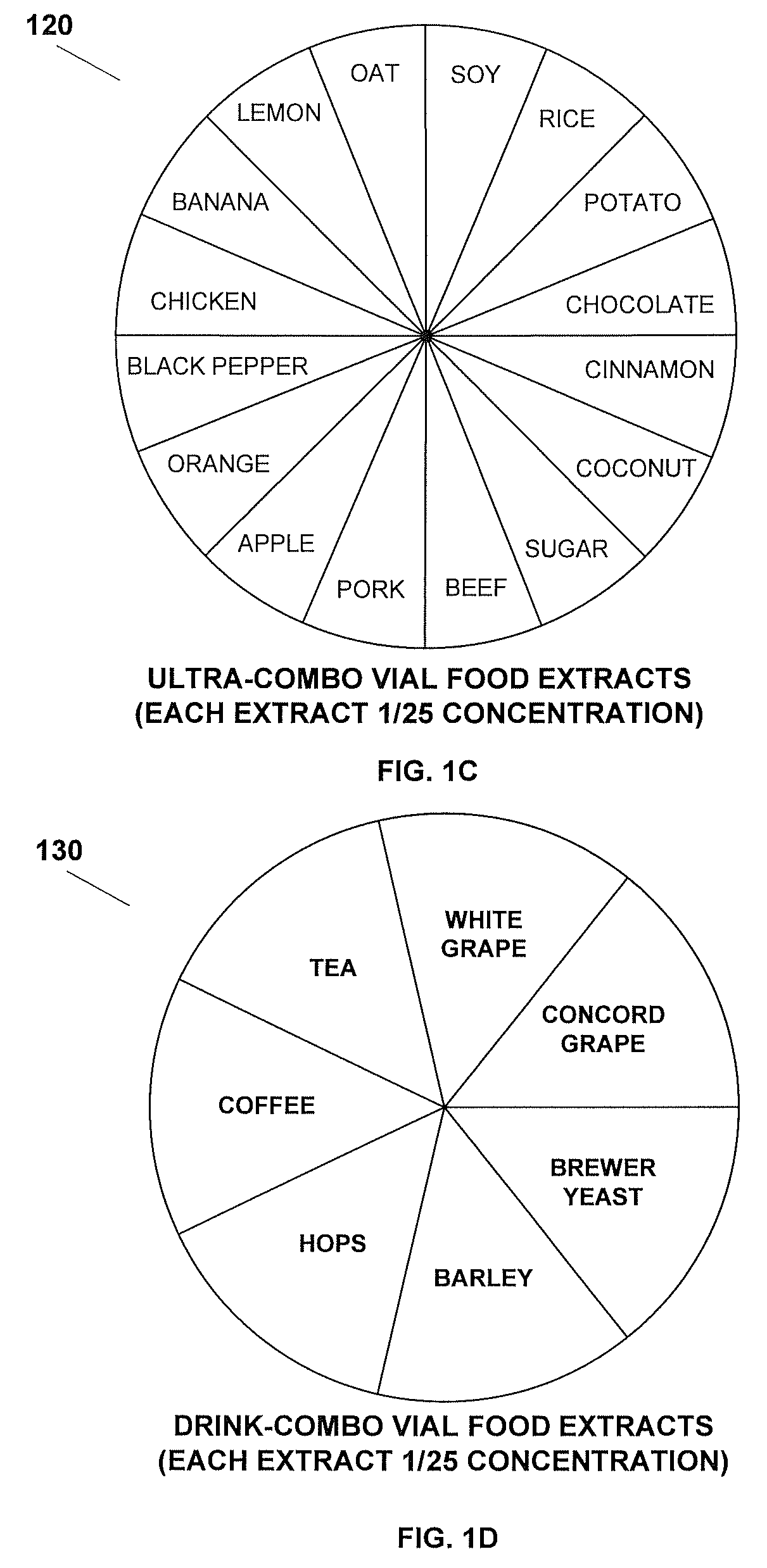Method for testing and treating delayed food allergies
a technology for food allergies and food allergy testing, applied in the field of delayed food allergy treatment, can solve the problems of life-threatening symptoms, high risk of potentially lethal anaphylactic reaction, and limited usefulness of other types of blood tests such as serum igg and alca
- Summary
- Abstract
- Description
- Claims
- Application Information
AI Technical Summary
Benefits of technology
Problems solved by technology
Method used
Image
Examples
example 1
Improved (Partial); 37-Year Old Female
[0116]Presented on 11 Mar. 2008 with nasal congestion. Had nasal polypectomy in 1987 and 1989. Has continued to have sinus infections, treated about twice a year for 20 years. These infections cause fatigue, pain in the right cheek and brow areas, and worsening of nasal blockage. Claritin, Zyrtec, Benadryl (antihistamines) produce little relief. Tomato products induce reflux symptoms. Has perennial rhinitis symptoms typical for delayed food sensitivities: repeated sneezing (up to 20 times in a row), and chronic mouth breathing. Inhalant allergy screen with intracutaneous tests showed mild to moderate reaction to mixes of: weed, tree, mold, mite; negative response to grass and animal danders.
[0117]Received #2 “super-combo” food sublingual immunotherapy (SLIT) and “not sure if any better,” perhaps because of overlying sinusitis, but “felt better” regarding less fatigue, less nasal congestion, and reduced repeated sneezing.
[0118]Received sinus endo...
example 2
Improved; 74-Year Old Female
[0123]Presented on 7 Jan. 2002 with nearly life-long sinusitis, nasal polyps, multiple sinus procedures, eventually developed fungal sinusitis, referred by a rhinologist, for chronic management. Had typical symptoms of perennial rhinitis symptoms from delayed food sensitivities: nocturnal dependent alternating nasal blockage, repeated sneezing spells, inner corner of eye itching. Developed recurrence of fungal sinusitis in March 2008. Because of severe polypoid edema and the copious fungal mucin, which could not be adequately removed in the clinic, she was scheduled for a surgical procedure to clear the sinuses. She was placed on #2 “super-combo” food SLIT on 8 Apr. 2008. In surgery, on 16 Apr. 2008, there was found no evidence of any fungal mucin and no edema of the sinuses or nasal cavities. NONE.
[0124]She reported that she had “enormous relief” within the first two weeks of using the drops: (% relief—symptom) 50%—fatigue; 60%—alternating nasal blockage...
example 3
Worse; 33-Year Old Male
[0128]Presented on 2 Apr. 2008 with nasal blockage worsening for several months, awakening with shortness of breath from intense nasal blockage. Occasionally will sneeze a couple times in a row. Exam showed geographic tongue and nasal mucosal edema. Received “super-combo” food SLIT at the standard #2 dilution.
[0129]Seen 18 Jun. 2008, and noted snoring worsened on the drops, the nose was more open a week after stopping the drops. Given #3 dilution of “super-combo” food SLIT.
[0130]Seen 1 Jul. 2008, and reports no more snoring, nasal blockage 80% better.
[0131]PLAN: continue “super-combo” food SLIT at the #3 dilution three times a day, and monitor diet and relate to any worsening of nasal blockage, and to any return of snoring (wife will monitor).
PUM
| Property | Measurement | Unit |
|---|---|---|
| volume | aaaaa | aaaaa |
| volume | aaaaa | aaaaa |
| concentration | aaaaa | aaaaa |
Abstract
Description
Claims
Application Information
 Login to View More
Login to View More - R&D
- Intellectual Property
- Life Sciences
- Materials
- Tech Scout
- Unparalleled Data Quality
- Higher Quality Content
- 60% Fewer Hallucinations
Browse by: Latest US Patents, China's latest patents, Technical Efficacy Thesaurus, Application Domain, Technology Topic, Popular Technical Reports.
© 2025 PatSnap. All rights reserved.Legal|Privacy policy|Modern Slavery Act Transparency Statement|Sitemap|About US| Contact US: help@patsnap.com



